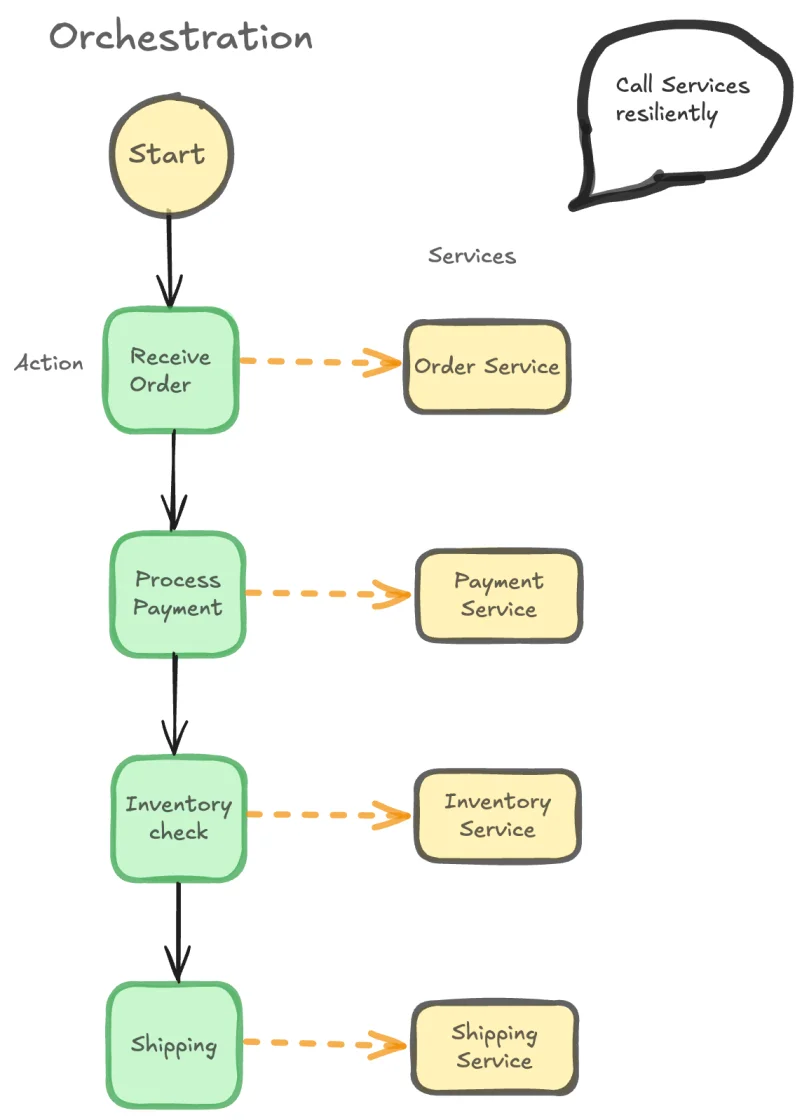Orchestration versus Choreography
Microservices architecture in a highly distributed system requires effective communication, that’s exactly where the orchestration and choreography come into play.
Microservices architecture in a highly distributed system requires effective communication, that’s exactly where the orchestration and choreography come into play. Both are two fundamental approaches to managing workflows and data interactions between services. Each has its unique feature and use cases where it excels. Let’s break down the key differences, along with examples to illustrate where one might work better than the other.
Orchestration vs. Choreography: The Core Difference
- Orchestration is a centralized approach, and the orchestration platform automatically coordinates the workflows by handling service-to-service communication, retrying failed tasks, and ensuring each service operates in the correct sequence.
- Choreography, on the other hand, is a decentralized approach where each microservice independently interacts with other microservice based on predefined rules or events.
Key Differences
| Aspect | Orchestration | Choreography |
|---|---|---|
| Control | Centralized control | Decentralized |
| Scalability | Highly scalable with multiple replicas of orchestrators | Complex to scale as independent interactions should be scaled to match requirements |
| Complexity | Work best in complex workflow, resilient | Harder initial setup effort and higher maintenance |
| Visibility | High – the orchestrator has visibility into the entire process | Requires a separate tracing tool and logging infrastructure to track |
| Usage | Decoupled microservices and APIs centrally coordinated by an Orchestrator
| Event-driven architecture built on loosely coupled systems tied together by an event broker
|
Orchestration

Choreography

Summary
Effectively both Orchestration and Choreography are similar. In the case of choreography, you are relying on a single message broker to reliably hold the messages for all the distributed services to consume and respond. In the case of Orchestrator, it acts as a smart message broker and calls the distributed services at the right time. The bonus point for Orchestrator is that it brings an incredible visibility into everything that is going on.
In simple event driven situations an Orchestrator may not be necessary such as storing events sent by a IoT device. However, in most situations where you need multiple steps to happen correctly an Orchestrator can add value by making it simpler to assemble these steps and giving you visibility into this.
A common argument is that an Orchestrator could be a single point of failure, however even in choreography the single point of failure exists in the form the message broker. So, choosing a reliable message broker or a reliable orchestrator can alleviate this concern. Platforms like Unmeshed can be used as an Orchestrator and it's designed to scale millions of requests per second reliably.


